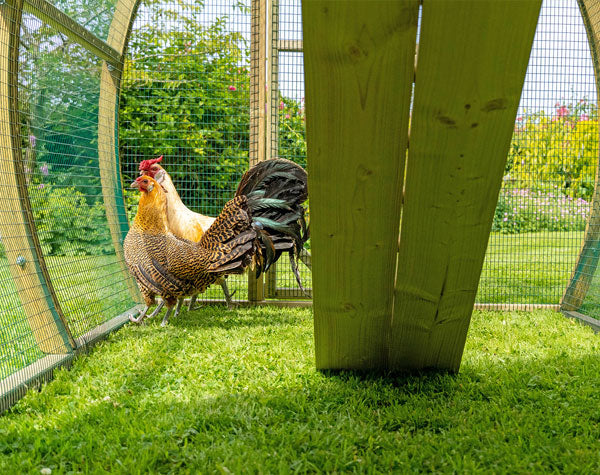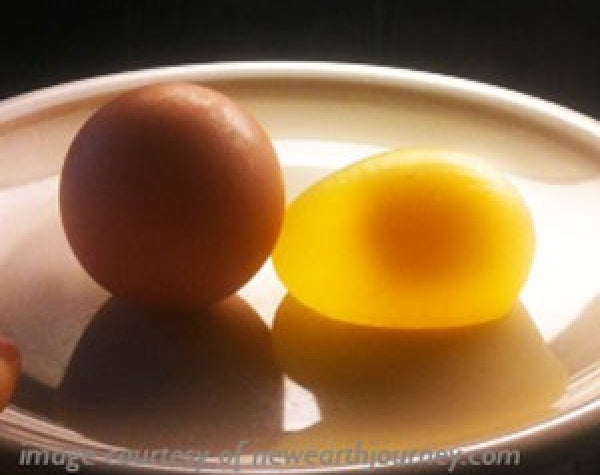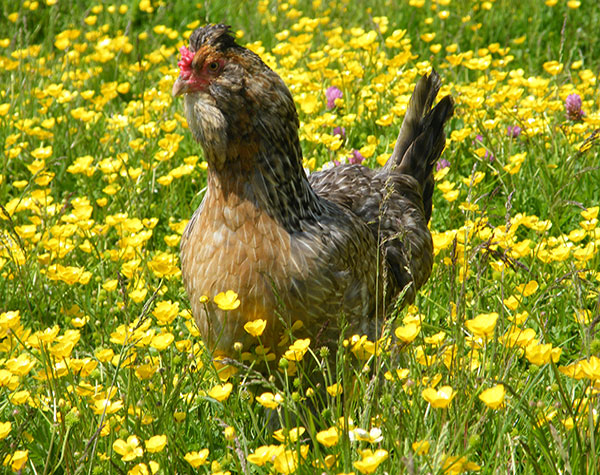Introducing Chickens to their New Home
Moving In Day:

Moving to a new home can be a stressful time for chickens, as it is for all of us, so it is especially important to make sure everything is in place for their new Chicken Coop before acquiring the birds.
Plan a few days ahead if possible, allowing yourself plenty of time to get organised.
For example, it should take you a couple of hours to build a Framebow Chicken Coop and we will have provided all the fixings needed as well as detailed instructions. But, please allow lots of time in case everything doesn't go to plan or as you intended.
Once you are happy with the site of your Coop (pop-hole not exposed to prevailing wind and weather) and that the new house is ready to be occupied, you can arrange to collect your birds.

Before bringing them home, prepare the inside of the house by adding a 1-inch layer of Hemp Bedding to the floor under the perches and a deeper layer to the nesting box. Don't forget to close the pop-hole door in readiness to keep the birds inside. Place feed and water temporarily inside the chicken house ready for the new arrivals.
It is best to arrange the collection of your new chickens in the afternoon so they can be locked up at teatime and left overnight to settle. As soon as it is daylight the next morning, open the pophole to let them out into the chicken run. They will need to familiarise themselves with their new coop. Although they may not all come out immediately, just give them time and they will pop out into their new world.
The chickens will probably be a little stressed on arrival. Try and keep them as quiet and calm as possible when lifting them out of the travel box. One at a time place them into the henhouse. Don't forget to keep the door closed each time to prevent escapees.
The easiest way to pick up the chicken is, in one movement (with the head facing you to avoid it pooping on your clothes), to put one hand either side of its body to hold the wings down. This prevents the bird flapping and becoming agitated.
Gently and quietly place the chickens into their new home. Check to ensure they have travelled well and have no major problems or knocks. Make sure their water is accessible and not liable to be knocked over. Close the hen house door(s), make doubly sure everything is secure and leave them to settle in for up to 12 hours.
Photo: First day coming out of the pop-hole of a new Coop. Its a whole new world ...
Feeding your new chooks
Feeding advice and tips:
 We don't advise leaving the feeder or drinker inside the house for too many days because they will spill the water and make the bedding wet (creating breeding places for harmful bacteria).
We don't advise leaving the feeder or drinker inside the house for too many days because they will spill the water and make the bedding wet (creating breeding places for harmful bacteria).
Equally, they will spill the feed into the bedding as well, which means they would scratch around the bedding for the pellets.
For more than their first few hours, this really is not healthy and means you are changing the bedding and cleaning the coop more frequently. Once it is dark and the birds have roosted they do not eat or drink anyway.
If the birds do have to be confined to the hen house during the day for any reason, then you can place Feeders & Drinkers in a corner where they cannot be knocked over, and away from the perches so they don't get fouled, but you should make sure the bedding stays clean and dry.
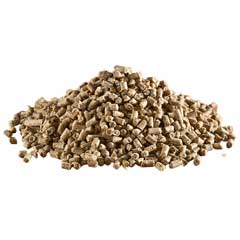
As a guide; you should allow approximately 150g-200g of pelleted feed per adult bird per day and one-third of a litre of drinking water per hen per day (less in winter but this is a suggested max during summer months).
Chickens should have access to feed and fresh water all the time. Don't be tempted to get a larger than necessary feeder and drinker thinking it will last them longer.
Water should be fresh every day. If left for several days you will get a build-up of algae and harmful bacteria. Pelleted feed (Layers Pellets) is their staple diet and they need ad lib access, they won't overeat.
The feed will go stale if left for more than a few days so again only put out what they will eat in a day or two. Don't be tempted to give their corn treat, or any other treat, first thing in the morning as this will stop them from eating the pellets. Mid-morning onwards for treats, but not too many!
Photo: Leave water and feed in the run area, not inside the house
Perches for Chickens
Make sure they use the perches:
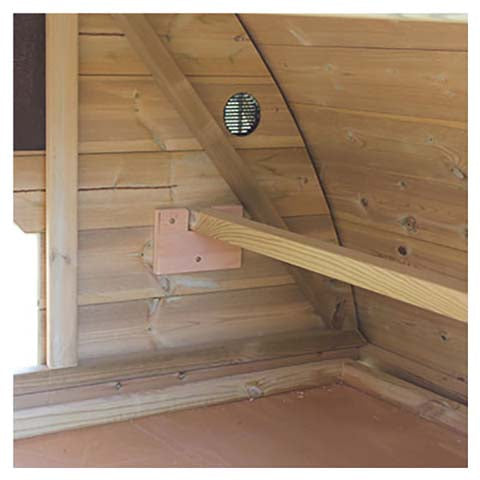
Young birds, at point of lay or younger, or barn reared hens, may not be used to perching.
Don't worry about this in the early days, the main thing is to get your hens settled into their new chicken house after their journey in the travel box.
If, after a few weeks, or if they are older than 25 weeks, and still not perching at night then you should take steps to encourage them to perch.
This will involve you accessing the house once they have gone to bed. Quietly, slowly and gently you should pick up the bird with your hands on either side of its body to hold the wings down.
Place the bird's feet on the perch so that its claws wrap around it and its breastbone rests on the perch. You may have to do this several nights running but eventually, they will learn to 'go up' to roost.
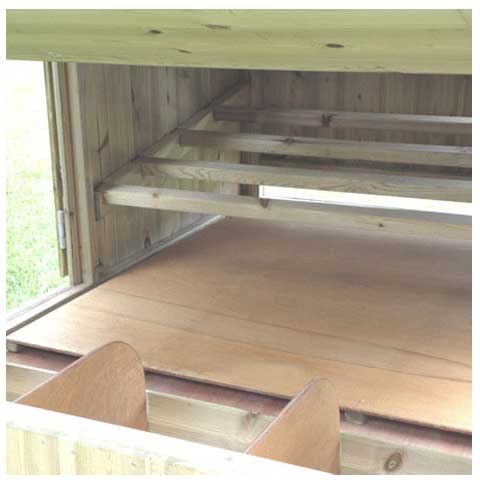
In a traditional henhouse, perches are always higher than the nest boxes so that the hens will not want to sleep in the nest boxes.
Not only is this not good for their legs and feathers but it means they would be sleeping in their own poop (chickens poop all night long, hence why absorbent bedding under the perches is the best idea) and you would be cleaning the nest boxes every day.
Our perch arrangements are such that you also have a little floor area for the chickens to move around so they can stretch their legs before exiting in the morning. This will help to prevent aggression and trampling. If you feel there is too much squabbling at roosting time you can add an extra perch perhaps, or add a freestanding perch until they get the idea.
It is true to say that they will wake at the crack of dawn and get off their perches ready to go outside. They will exit the moment you open the door and then rush off to feed and drink.
Photo: Higher perches in the house; 2ins square with rounded edges
Your Daily Routines
Planning your routine:
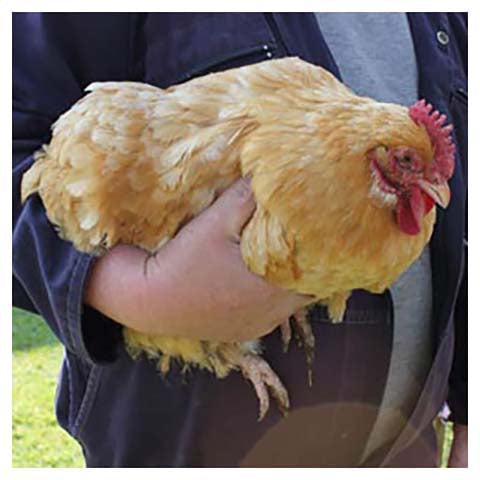
For the first few evenings, you will have to go into the run to help them go to bed through the pop-hole until they get used to where they roost.
This can sometimes only be a couple of days, sometimes a week.
Once you can see they are going to bed on their own at dusk then you know they are 'homed' to the henhouse. Equally, they should exit the house the moment you open the pop-hole door in the morning.

If, however, you love your Sunday morning lie-ins you could add an automatic pop-hole-door opener to do the job for you.
Once they have settled in, say in 2 weeks, then you can consider letting them roam your garden (if this is what you wish to do). You should also get used to your new routine of opening the pop-hole as soon after dawn as possible, checking their water and feed, seeing if there are any eggs to collect and taking a moment to watch them for any signs of illness or injuries.
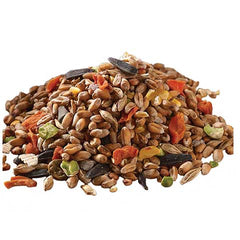
About an hour or so after opening the pop-hole you can scatter a handful of grain (mixed poultry corn) on the ground for them to scratch around for, this will keep them occupied for a while. Check again for eggs.
Then, say mid-afternoon, or at least two hours before dark, scatter another handful of poultry corn and do a final check for eggs.
The birds will then put themselves to bed just before dusk and you can close the pop-hole when all are safe inside.
Photo: How to handle and hold hens safely to avoid stress
- - - -
Moving New Hens In is ©Flyte so Fancy Ltd. Updated 2022. Author: Anne Weymouth (Director, Flyte so Fancy Ltd). Reproduction of part or all of this text is only possible with the express permission of Flyte so Fancy Ltd.

